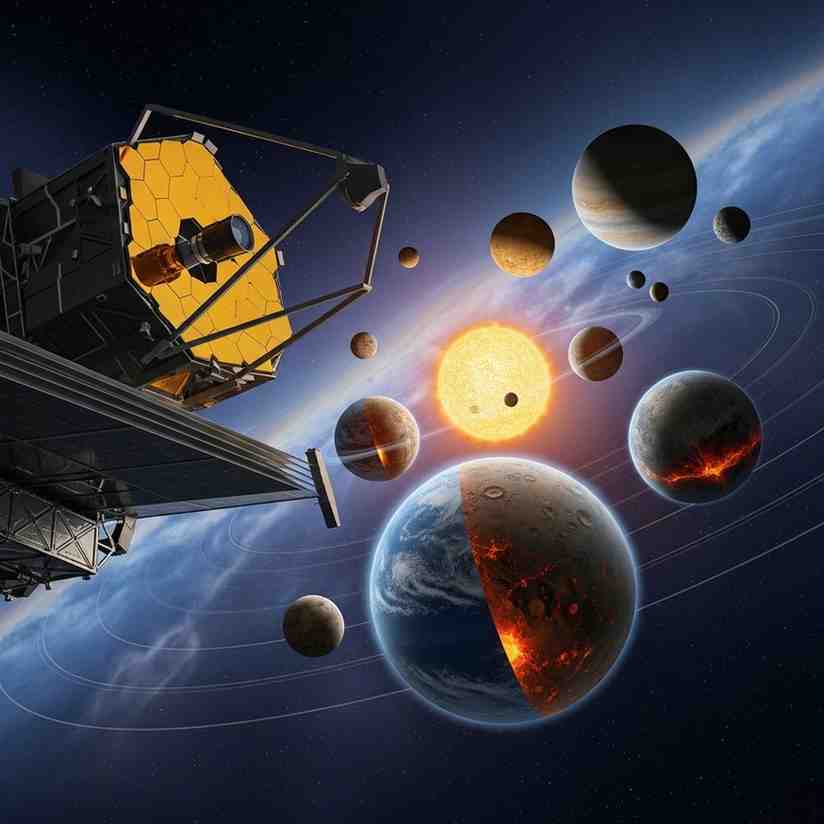
- A new study based on James Webb Space Telescope (JWST) data has challenged long-standing assumptions about sub-Neptunes , the most common class of exoplanets found in our galaxy. Once thought to host global magma oceans beneath thick hydrogen-rich atmospheres, new modelling now suggests that many of these worlds may actually possess solid rocky interiors .
What the Study Reveals
Researchers Bodie Breza, Matthew C. Nixon, and Eliza M.-R. Kempton simulated hundreds of thousands of planet models to explore the interior–atmosphere link in sub-Neptunes. Their findings indicate that high internal pressures at the envelope–mantle boundary can solidify silicates into post-perovskite phases , forming “rock floors” instead of molten magma. This discovery redefines how astronomers interpret JWST spectra for these planets, especially when evaluating potential habitability and atmospheric chemistry.
Factors That Determine Interior States
The study identifies three main factors that decide whether a sub-Neptune retains a magma ocean or solidifies over time:
-
Atmospheric composition and thickness – Planets with heavier (high mean molecular weight) atmospheres or thinner envelopes are more likely to have solid surfaces.
-
Cooling rate with age – As sub-Neptunes cool, pressures rise at the radiative–convective boundary , promoting solidification.
-
Envelope–mantle ratio – A large mantle fraction with high atmospheric pressure stabilises solid silicates.
Evidence from Benchmark Worlds
The well-studied exoplanet GJ 1214 b , observed by JWST, exhibits a hazy, high-MMW atmosphere—signs consistent with a solid interior. Similar characteristics are noted for TOI-270 d and other sub-Neptunes, implying that molten surfaces are not universal.
Exam Pointers
-
Sub-Neptunes: Planets between Earth and Neptune in size; most common in the Milky Way.
-
MMW (Mean Molecular Weight): Heavier molecules increase surface pressure.
-
JWST Role: Probes atmospheric composition via transmission spectra.
-
Key Boundary: Radiative–convective layer influences interior pressure.
Month: Current Affairs - November 11, 2025
Category: Science & Technology – Space Research